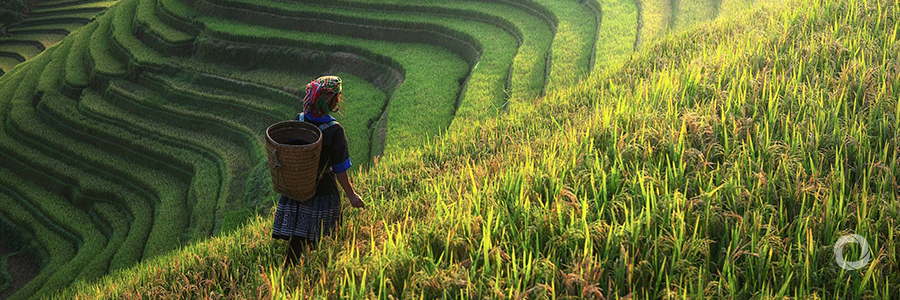The act of drinking tea is a key part of many of Vietnam’s social rituals and interactions. As a commodity, tea is also one of the country’s most important exports. But in recent years, unpredictable, heavy downpours and overuse of agrochemicals have led to poor quality crops, low yields and a decline in the reputation of Vietnamese tea within the global export market.
But now, with the help of UN Environment and partners, Vietnamese tea growers have begun to turn the situation around, resulting in an impressive adoption of sustainable farming techniques and a 30 percent increase in average income in only two years.
The scale of this land degradation challenge and its impact on tea farmers around Asia prompted UN Environment to collaborate with The Rainforest Alliance to establish the Sustainable Tea Production Landscapes project. Since 2014, the Global Environment Facility-funded initiative has been working across five of Asia’s best-known tea-producing regions – Darjeeling and Assam (India), Yunnan (China), lowland Sri Lanka and Vietnam – educating smallholder farmers and large estate tea growers on the dangers of land degradation and training them in sustainable farming and land management techniques.
While the project’s environmental aims are to protect and restore soil fertility, enhance carbon sequestration and conserve the biodiversity found in tea production landscapes, it also aims to secure farmers’ livelihoods by reducing their vulnerability to climate-related crop failure – an aim that is already bearing fruit.
According to Rikolto, the project’s implementing partner in Vietnam, over 3,000 stakeholders from tea-producing communities, grower cooperatives and local government in Yen Bai, Lai Chau and Thai Nguyen provinces have been trained in alternatives to agrochemicals and effective soil management. Rikolto have used the Farmer Field School methodology, which focuses on learning through experience, capitalising on local knowledge and empowering growers to take ownership of land and soil issues. The curriculum also emphasises the importance of using compost and green manure, and of planting shade trees to keep temperature and moisture levels constant.
“Before I joined the project. The tea plants were small and red in color due to malnutrition. Now, they look healthy because they are under the shade and getting what they need. My yield has doubled,” said Thanh a farmer, who has been growing tea since 1983.
Original source: UN environment
Published on 3 August 2018

